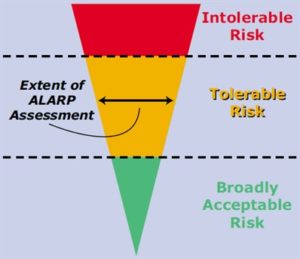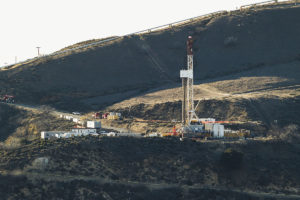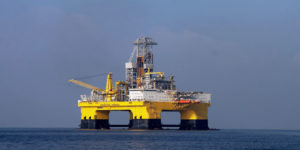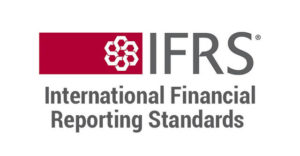Tips to reduce risks to ALARP
ALARP, short for as low as reasonably practicable, describes the level to which we expect to see workplace risks controlled. The “ALARP region” lies between the intolerable risk levels and broadly acceptable risk levels. Even if a level of risk for a case has been judged to be in this ALARP region, it is still necessary to consider introducing further risk reduction measures to lower the remaining risks. The ALARP guideline is flexible and the duty-holder generally use these 2 methods to determine whether a risk is ALARP. Depending on the complexity and novelty of the case, duty-holders either…
Read MoreA Timeline of Major Well Integrity Incidents
Major well integrity incidents highlight the need to assure well integrity to be in place within the oil and gas and petrochemical industry. Industrial incidents caused by failures and lapses in regular maintenance have irreversible damage to the environment and costly for operators. These incidents serve as an important reminder for companies to constantly review and improve safety protocols and equipment to prevent such incidents from happening. Here is a timeline of major well integrity incidents since 2004. Moss Bluff Cavern #1 (August 2004) In August 2004, Cavern #1 of the Moss Bluff natural gas storage in Texas, United States,…
Read MoreMost Common Heavy Lifting Hazards
Working with cranes poses many hazards, and unsafe working practices can result in injuries, fatalities and costly damage to materials. Therefore, it’s important you’re aware of the main hazards. The Bureau of Ocean Energy Management (BOEM) has posted several actions to prevent crane accidents: Follow an effective preventive maintenance and inspection program Value communication, planning, and supervisory controls when moving or disassembling cranes Properly rig loads Properly train operators and riggers Ensure cranes are adequate to lift loads The two most noticeable trends are rigger training and rental cranes. Other hazards include operator error, overloaded cranes, and lifting…
Read MoreSurvey Findings Reveal IFRS 9 Implications for Financial Institutions
The International Financial Reporting Standard (IFRS) 9, the new accounting principle for financial instruments, has several implications on financial institutions. IFRS 9 specifies how an entity should classify and measure financial assets, financial liabilities, and some contracts to buy or sell non-financial items. In other words, IFRS 9 is being implemented through three stages; Classification & measurement of financial instruments, impairment of financial assets and hedge accounting. IFRS 9 will cover financial institutions across Europe, the Middle East, Asia, Africa, and Oceania. Given the IFRS 9 requirements, banks are required to make some changes to the way they…
Read More3 Benefits Of A Certified International Project Manager
Gaining certification and upskilling is a rising trend in today’s workforce. Not only does it allow workers to keep up with the technical skills relevant to their job, but also improves their problem-solving skills and collaboration among peers. According to McKinsey, “technologies could automate 45% of the activities people are paid to perform and that about 60% of all occupations could see 30% or more of their constituent activities automated”. Hence, workers today need to be equipped with the right skills and trained with the right training body to ensure employability. One way to do so is through gaining…
Read MoreFrequent Mistakes When Conducting HAZOP and How To Avoid Them
A Hazard and Operability (HAZOP) study is a structured and systematic review of an existing process or operation to identify and evaluate risks to personnel or equipment. A HAZOP study is done to review and pick up design and engineering issues that may otherwise not have been known. The HAZOP team lists potential causes and consequences from these issues. If existing safeguards fail to meet the criteria, the team recommends the action be taken to reduce the risk. HAZOP’s meticulous approach requires a team with relevant expertise, and here are the three common mistakes when doing a HAZOP study.…
Read More3 Ways To Perform Asset Management for Oil & Gas
Asset management requires the successful integration of the asset management policy, strategy and plan. According to the PAS 55 definition, asset management is: “systematic and coordinated activities and practices through which an organisation optimally manages its physical assets and their associated performance, risks and expenditures over their lifecycles for the purpose of achieving its organizational strategic plan.” ISO 55000 defines asset management as, “the activity to realise value from assets.” Hence, asset management is a structured approach for aligning the business direction with the best whole-life cycle combination of acquiring, utilising, maintaining and renewing/disposing of assets to deliver that…
Read MoreMajor Oil Companies Are Focusing On Deepwater Drilling Projects
As of January 2018, the Gulf of Mexico presents the most number of offshore rigs of 175, followed by 159 in the Persian Gulf and 152 in Southeast Asia. The recent high prices of $100 per barrel reflect the growing scarce supply for oil and gas. Major oil and gas companies such as Shell, Exxon and BP are looking for alternative sources for oil production, and investing in deepwater projects to keep up with production. With the activity in the Gulf region picking up, Shell announced in April that they were building a deepwater platform named Vito. Chevron Big…
Read MoreImplications of IFRS 9 on Banks
The International Financial Reporting Standard (IFRS) 9, the new accounting principle for financial instruments, has several implications on banks. IFRS 9 specifies how an entity should classify and measure financial assets, financial liabilities, and some contracts to buy or sell non-financial items. In other words, IFRS 9 is being implemented through three stages; Classification & measurement of financial instruments, impairment of financial assets and hedge accounting. With that in mind, here are three strategic actions banks have to take to be ready for IFRS 9. Adjusting their portfolio strategy IFRS 9 require banks to review and adjust their portfolio…
Read More3 Ways the Digital Age Will Impact the Workplace
The role of Human Resources (HR) has evolved significantly over the past decade to align itself with the constant changing business environment and technology. HR as a function will continue to shift its focus from operating and administrative effectiveness to establishing a structure that is able to facilitate business growth and operational excellence. Here are some ways companies are incorporating the latest technologies into the workplace. Artificial intelligence becomes embedded in the workplace The use of AI in our everyday products and AI vendors supporting all types of companies is becoming more common. Companies are opting for technologies…
Read More









